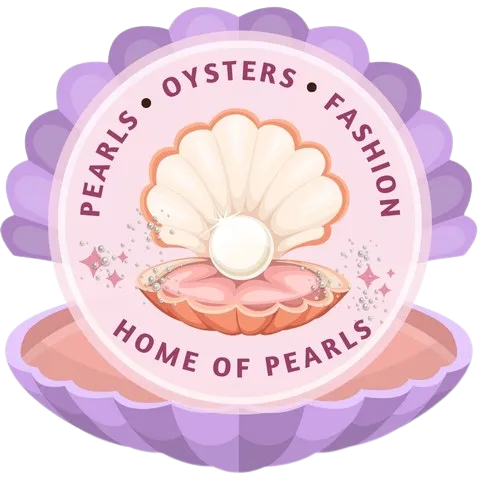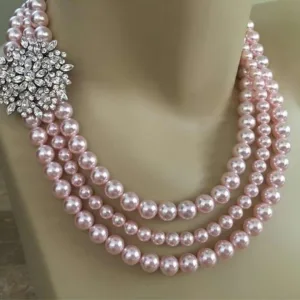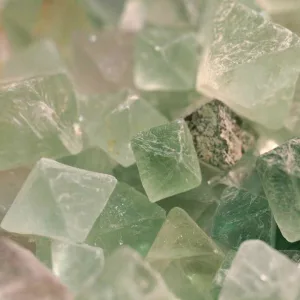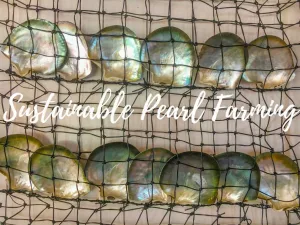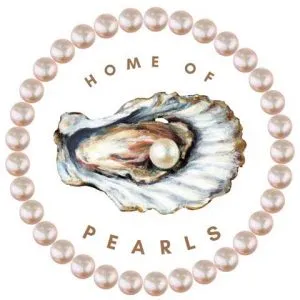Whether you’re looking for something sophisticated and glamorous or an understated elegance to add subtle sparkle to your look, pearls can do it all! But when it comes down to choosing between saltwater and freshwater pearls, which is right for you?
Saltwater pearls vs. Freshwater – what’s the difference? In this blog post, we’ll take a closer look at both types of pearls so that you can make an informed decision about how best to incorporate them into your wardrobe.
We’ll also discuss styling tips and care instructions so that no matter which type of pearl you choose, they will stay beautiful forever!
Table of Contents
- Saltwater Pearls
- Freshwater Pearls
- Comparison of Saltwater vs Freshwater Pearls
- FAQs in Relation to Saltwater Pearls vs. Freshwater
- Conclusion and final thoughts 💭
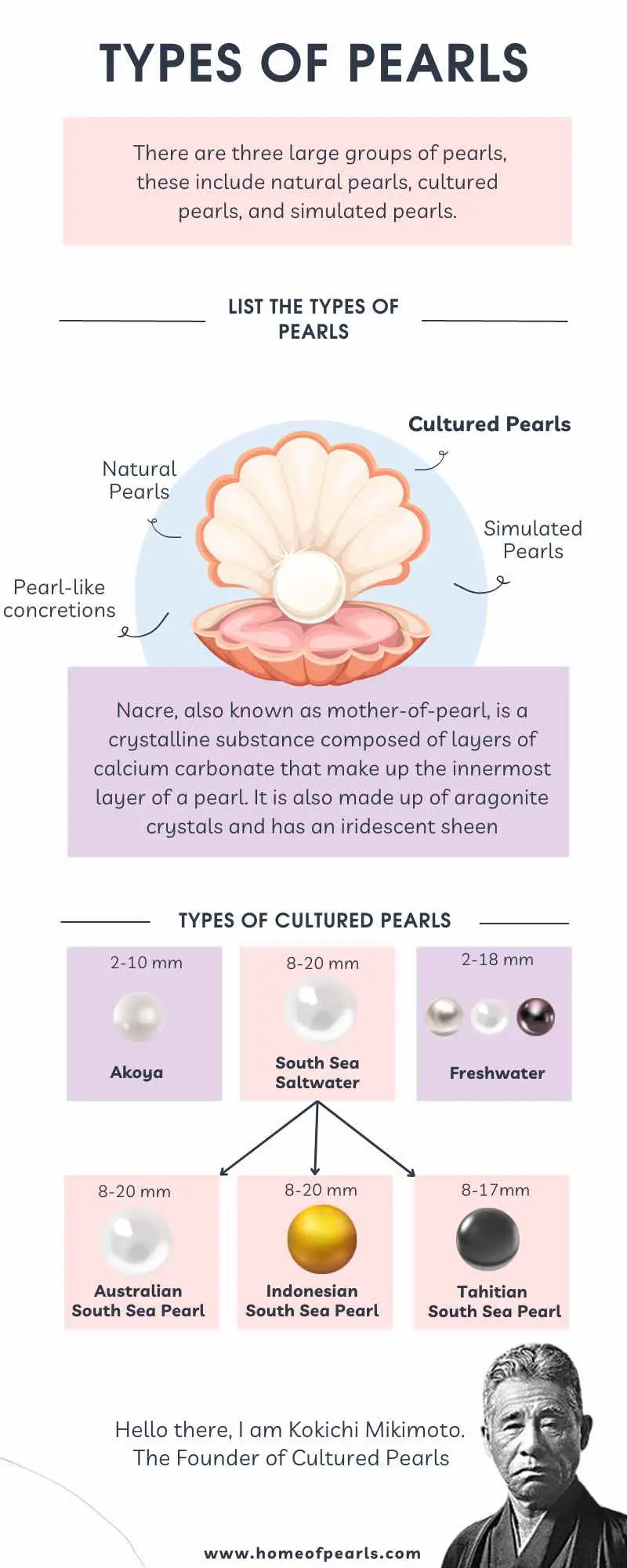
Saltwater Pearls
Saltwater Pearls have been a prized possession since ancient times. They are formed in the mantle of certain mollusks, such as oysters and mussels, that live in saltwater habitats around the world. Saltwater pearls come in a variety of shapes, sizes, colors, and qualities.
Origin and History: Saltwater pearls were first discovered by divers off the coast of Bahrain over 4500 years ago. Since then, they have been found all over the world, from Japan to Australia to India.
The oldest known pearl jewelry was discovered on an Egyptian mummy dating back to 2400 BC!
Throughout history, saltwater pearls have been highly sought after for their beauty and rarity, making them one of the most valuable gems available today.
Types of Saltwater Pearls: There are two main types of saltwater pearls – Akoya and South Sea pearls – which vary greatly in size, shape, color, and quality depending on where they’re harvested from.
Akoya pearls are typically smaller than South Sea varieties but can still range up to 10mm or more in diameter with a wide array of colors, including white, pinkish-white, silver-gray (platinum), or yellowish-green (olive).
South Sea Pearls tend to be larger than Akoyas ranging anywhere from 9mm up to 20mm or more, with beautiful shades like white gold (creamy ivory), champagne gold (golden cream), or black Tahitian pearl (black/dark gray).
To keep your saltwater pearl jewelry looking its best, it is essential to take proper care when handling them and to store them properly when not wearing them.
Avoid contact with harsh chemicals such as perfumes or hairspray, which can damage their delicate surfaces; use only mild soap if necessary for cleaning purposes; store separately away from other pieces so they don’t rub against each other; never expose your precious gems directly to sunlight for extended periods of time.
Finally, make sure you get your pieces professionally inspected once every few years by a qualified jeweler who will check for any signs of wear and tear that may need repair work done before it becomes too late.
As mentioned earlier, due to their rarity and beauty, saltwater pearls can command quite high prices compared to some other gemstones out there.
However, this doesn’t mean you’ll necessarily break the bank just because you want your own piece of these stunning jewels!
Depending on the type, size, quality, etc., prices start at around $100 and go upwards of thousands of dollars – even tens of thousands in rare cases.
Saltwater pearls are some of the most sought-after gems in the world due to their rarity and beauty.
They come in a variety of shapes and sizes, making them perfect for all kinds of jewelry. Now let’s take a look at freshwater pearls, which have their own unique qualities that make them stand out from saltwater pearls.
Key Takeaway: Saltwater pearls are highly sought after for their beauty and rarity, with two main types: Akoya and the South Sea.
Freshwater Pearls
Freshwater Pearls have been around for centuries, and their popularity has only grown in recent years.
Originating from freshwater mussels found in rivers, lakes, and ponds all over the world, these pearls are formed when an irritant enters the mollusk’s shell.
The mollusk then secretes a substance called nacre to protect itself from the irritant. Over time this substance builds up layer by layer until it forms a pearl.
Origin and History: Freshwater pearls were first discovered in China thousands of years ago but they didn’t become popular until the late 19th century when Japanese farmers began cultivating them on a large scale.
Since then, freshwater pearls have become one of the most sought-after gems due to their affordability and variety of colors available.
They are now cultivated all over the world, including Japan, France, Germany, Scotland, and even parts of North America such as Tennessee and Mississippi Rivers!
Types of Freshwater Pearls: There are two main types of freshwater pearls – cultured or farmed pearls which are produced with human intervention, and natural or wild pearls, which form naturally without any help from humans.
Cultured freshwater pearls come in many shapes, such as round, oval, button-shaped, or baroque (irregularly shaped).
Natural freshwater pearls tend to be rare since they form randomly in nature without any assistance from humans, so they can vary greatly in size, shape, color, etc.
The cost of freshwater pearl jewelry depends on factors such as size, shape, color, luster, quality, origin type (cultured vs. natural), treatments used during the production process, etc.
Generally speaking, prices range anywhere between $50-$1000+ per piece, depending on what you’re looking for.
In terms of value, these gems hold their worth quite well, so investing in high-quality pieces is definitely recommended.
Freshwater pearls are a beautiful and cost-effective alternative to saltwater pearls, making them an excellent choice for anyone looking to add some shimmer and shine to their wardrobe.
Now let’s compare the two types of pearls and explore the differences between them.
Key Takeaway: Freshwater pearls come in two main types: cultured and natural.
Comparison of Saltwater vs Freshwater Pearls
Understanding the differences between saltwater and freshwater pearls can help you choose the best option for your needs.
| Feature | Saltwater Pearl | Freshwater Pearl |
|---|---|---|
| Type of pearl | Has both natural and cultured pearls | Has both natural and cultured pearls |
| Types of mollusk | Formed in saltwater oysters | Formed in freshwater mussels |
| Duration | Takes longer to form | Formed over a relatively shorter period |
| Quality (nacre thickness) | High quality and luster (due to a thickened nacre) | Lower quality and luster (due to a think nacre) |
| Cost | Expensive | Very affordable |
Quality Differences: Saltwater pearls tend to be more expensive than their freshwater counterparts due to their superior quality.
Also, saltwater pearls are generally rounder in shape, with fewer blemishes or flaws on the surface of the pearl compared to freshwater pearls.
They also tend to have a higher luster (higher nacre of saltwater compared to freshwater pearls), which is what gives them their signature shine and sparkle when light hits them from different angles.
Color Variations: When it comes to color variations, saltwater, and freshwater pearls come in a wide range of hues, including white, pink, cream, yellowish-green, purple, and black.
However, some colors, such as silver or gold, are only found in saltwater varieties.
Durability: In terms of durability, both types of pearls are quite strong but they do require proper care if you want them to last a long time without damage or discoloration occurring over time due to exposure from elements such as sunlight or water splashes during cleaning/maintenance routines.
Generally speaking, saltwater varieties tend to be slightly tougher than freshwater variants.
Key Takeaway: Saltwater and freshwater pearls are both beautiful and durable, but they differ in quality, color variations, and durability.
FAQs in Relation to Saltwater Pearls vs. Freshwater
Are saltwater pearls worth anything?
Yes, saltwater pearls are worth something. They can range in value from a few dollars to several thousand, depending on their size, shape, color, and luster. Natural saltwater pearls are the most valuable as they have not been treated or altered in any way.
Cultured saltwater pearls also have value but may be less expensive than natural ones due to their treatment processes. The rarity of certain colors and shapes can increase the price significantly as well. Ultimately, the true worth of a pearl is determined by its beauty and uniqueness, which makes them highly sought-after items for jewelry lovers around the world.
Why are freshwater pearls cheaper than saltwater pearls?
Freshwater pearls are typically cheaper than saltwater pearls because they are easier to farm and produce. Freshwater pearl farming is done in lakes, ponds, and rivers where oysters can be cultivated with relative ease.
This makes the process of harvesting freshwater pearls more efficient and cost-effective compared to saltwater pearl farming which requires a larger investment in resources such as boats, divers, and equipment for deep-sea diving.
Additionally, freshwater pearls tend to have less luster than their saltwater counterparts due to the environment in which they form. As a result, they are generally considered to be of lower quality and, therefore, less expensive.
Conclusion and final thoughts 💭
In conclusion, saltwater and freshwater pearls are both beautiful gems that can be used to create stunning jewelry pieces. Freshwater pearls are generally less expensive but come in fewer varieties.
Ultimately, the choice between a saltwater or freshwater pearls comes down to personal preference and budget when it comes to styling with pearl jewelry.
